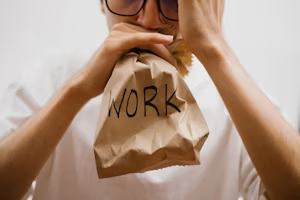Introduction
Step into any store, and you’ll find people in branded shirts and forced smiles greeting you, offering assistance, scanning your items, folding clothes, bagging groceries. To the customer, retail looks like simple work: ring up purchases, restock shelves, tidy displays. But to those behind the counter, retail is not only about transactions—it is about surviving low pay, absorbing abuse, and navigating corporate scripts that demand constant cheer. Retail is one of the world’s largest employers, yet also one of the least understood. To work in retail is to live contradictions: visible to customers but invisible to society, essential to commerce but expendable to employers, surrounded by goods but struggling to afford them.
The First Shift
For many, retail is first job—entry into labor market as teenager or young adult. First shifts feel overwhelming: memorizing procedures, learning registers, folding endlessly, handling impatient customers. Supervisors emphasize smiles, scripts, “the customer is always right.” Hours drag as bodies ache, nerves stretch, mistakes multiply. Yet first shifts also deliver pride: first paychecks, first independence, first taste of labor’s worth. Retail introduces workers to economy not as consumer but as laborer—revealing hidden cost behind every polished aisle.
The Script of Service
Retail thrives on performance. Workers recite scripts: “Welcome in, can I help you find anything?” “Would you like to sign up for rewards?” “Have a great day.” Tone rehearsed, smile constant, demeanor cheerful. Behind script, workers conceal exhaustion, frustration, resentment. Customers demand cheer, managers enforce it, corporations script it. Service becomes theater, labor becomes performance, authenticity suppressed. Workers describe feeling like actors in endless play where applause is absent, curtain never falls. Scripts conceal humanity, reducing people to roles: cashier, greeter, associate. Yet within performance, small acts of rebellion emerge—sarcasm hidden in smiles, jokes shared with colleagues, humanity preserved quietly beneath corporate script.
The Pressure of Customers
Customers define retail experience, and not always kindly. Workers endure impatience, entitlement, anger. Abuse common: insults hurled over prices, tantrums over returns, disdain toward workers seen as “unskilled.” Stories circulate of customers throwing products, screaming over coupons, humiliating employees. “The customer is always right” empowers mistreatment, silences defense, prioritizes sales over dignity. Workers absorb emotional labor daily—apologizing for errors not their own, soothing tempers, maintaining composure. Pressure corrodes psyche, leaving workers drained, cynical, anxious. Yet moments of kindness sustain: a thank you, a smile, a recognition of humanity. Customer interactions oscillate between cruelty and compassion, shaping emotional landscape of retail life.
Wages and Precarity
Retail wages are notoriously low. Minimum wage dominates, raises incremental, benefits scarce. Many workers juggle multiple jobs, survive on food stamps, rely on unstable schedules. Employers cut hours to avoid full-time benefits, manipulate scheduling software to optimize profits at expense of lives. Precarity defines existence: paychecks barely cover rent, health insurance absent, futures uncertain. Workers describe exhaustion not only from labor but from survival—calculating bills, stretching groceries, sacrificing needs. Surrounded by products they sell but cannot afford, workers live irony of abundance without access. Precarity chains workers, trapping them in cycles difficult to escape.
Solidarity and Survival
Retail fosters camaraderie. Associates bond over shared frustrations, trade shifts, cover for each other, vent in break rooms. Humor sustains morale—jokes about absurd customers, managers’ quirks, endless folding. Solidarity emerges in small acts: sneaking free snacks, bending rules to help colleagues, protecting each other from abusive customers. Unions attempt to organize, strikes erupt, protests demand fair pay. Yet solidarity fragile—fear of retaliation, high turnover, competition for hours weaken resistance. Survival becomes collective and individual simultaneously: workers cling to camaraderie but endure precarity largely alone.
Stories from the Shop Floor
Consider Jordan, a cashier at supermarket who smiles through insults from customers angry about prices beyond his control. Or Priya, clothing store associate folding same shirts hundreds of times daily, earning less than garments she sells. Or Miguel, night stocker exhausted from graveyard shifts, juggling childcare and second job. Or Alisha, manager balancing corporate demands with empathy for her team, caught between enforcing rules and protecting workers. Their stories reveal contradictions: pride and precarity, visibility and invisibility, humanity and performance. Shop floor is not just workplace—it is stage where lives unfold daily under fluorescent lights.
The Pandemic Lens
Pandemic exposed fragility of retail. Workers labeled “essential” but treated as expendable, risking health for low pay. Customers grew more volatile, tensions flared, safety compromised. Yet pride grew too: workers recognized as crucial to survival of communities. Applause faded quickly, wages remained stagnant, precarity unchanged. Pandemic revealed truth: retail workers sustain society but rarely reap respect or reward. Essential yet invisible, they embody contradictions of modern labor.
The Ethical Shadow
Retail raises ethical dilemmas. Corporations profit enormously, executives earn millions, while workers earn poverty wages. Consumers demand low prices but ignore cost borne by workers. Labor exploitation hides in plain sight, normalized through ubiquity. Ethical shadow stretches across aisles, haunting transactions: behind every cheap good lies human cost of underpaid labor. Workers endure silently, consumers complicit unconsciously, corporations thrive. Ethical questions linger: what is fair price of labor, how should society value those who serve daily needs? Answers remain elusive, shadow persists.
Conclusion
Retail work is world of contradictions. Smiles mask exhaustion, scripts conceal humanity, abundance surrounds precarity. It is labor dismissed as unskilled yet essential to economy, work visible yet workers invisible. For outsiders, retail appears simple; for insiders, it is grind, theater, survival. To work in retail is to endure pressure of customers, demands of corporations, weight of low wages, while finding pride in camaraderie and resilience. Retail realities remind us that economy depends not only on markets and executives but on millions folding clothes, scanning items, stocking shelves. Their labor sustains commerce, their lives shaped by contradictions of work undervalued but indispensable.

